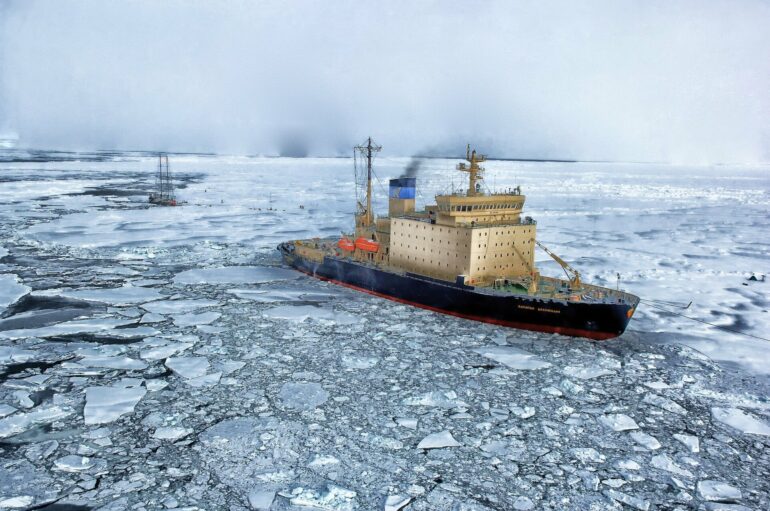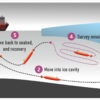Floating microplastics from European rivers may accumulate in parts of the Arctic Ocean, the Nordic Seas and Baffin Bay, a study in Scientific Reports suggests.
Previous research has reported the presence of high concentrations of microplastic particles throughout the Arctic Ocean, however the source of these microplastics and where they accumulate has been unclear.
Mats Huserbråten and colleagues combined models of ocean currents between 2007 and 2017 with simulations of floating microplastic movements. They simulated the release of microplastics from 21 major rivers across northern Europe and the Arctic every day over a ten year period and modeled their movements over decades. The researchers then compared the results of their model with the distribution of floating microplastics across 121 seawater samples that were collected from 17 sites off the west coast of Norway between May 2017 and August 2018.
The authors found that, upon being released from rivers, most simulated particles drifted along two main pathways. 65% drifted along the Norwegian coast towards the Laptev Sea—located north of Russia—before being transported into the Arctic Ocean, across the North Pole, and then exiting the Arctic Ocean via the Fram Strait—located east of Greenland. 30% of the simulated particles drifted along the Norwegian coast before moving southwards via the Fram Strait and then along the east and south coasts of Greenland before traveling further south along the northeast coast of Canada. After 20 years of simulations the researchers were able to identify clear areas where floating microplastics accumulated. These were in the Nordic Seas, the Nansen Basin in the Arctic Ocean, the Barents Sea and Laptev Sea—located between the Arctic Ocean and north Russia—and Baffin Bay, which is located between Greenland and Canada. Analyses of seawater samples revealed that the distribution of floating microplastics was consistent with that predicted by the authors’ model after ten years of simulated microplastic release and subsequent circulation through the Nordic Seas, the Arctic Ocean and the Fram Strait. This indicates that floating microplastics may have been circulating throughout the Arctic for at least ten years.
The authors suggest that the circulation of floating microplastics could have consequences for the health of Arctic ecosystems. The findings highlight the importance of better plastic waste management, they add.
More information:
Mats Huserbråten, Trans-polar drift-pathways of riverine European microplastic, Scientific Reports (2022). DOI: 10.1038/s41598-022-07080-z. www.nature.com/articles/s41598-022-07080-z
Provided by
Nature Publishing Group
Citation:
European floating microplastics may accumulate in Arctic Ocean (2022, March 17)



